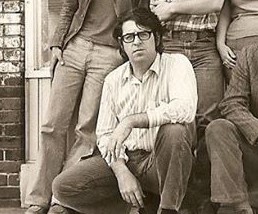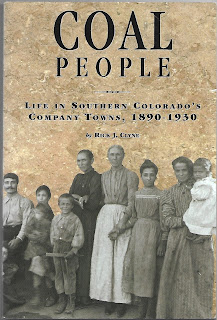America is in the midst of the worst constitutional crisis in the history of the country. I had considered saying that we are in the worst constitutional crisis since April 12, 1861, the day the Civil War began. But after careful consideration, I realized that even during the Civil War, the forces which were fighting against the United States of America were not controlled by a foreign power. They were not fully committed to destroying Democracy in North America. They were not fully committed to destroying the US Constitution. Today, we are in a battle in which the individual who illegally occupies the White House is fully committed to destroying America, American Democracy, the US Constitution, and everything they all represent as he works to support his Russian master and the ideas of his heroes such as Adolph Hitler, Benito Mussolini, Adolph Eichmann, and every other Fascist and dictator who ever lived. These are the worst days in the history of the country, worse than the Civil War, worse than World War I, worse than World War II, worse than the Great Depression. We are literally engaged in a battle which will decide if this country will survive as the greatest democracy in the history of the world.
 |
| Statue Of Liberty--Photo by Ellis Island |
So the question becomes what will each of us do in response to this widespread Fascist attempt to destroy America. I don't know about you but I will fight it to my dying breath. Just as the title of this blog post says 'This is the battle I was trained to fight'. I have been incredibly lucky to be born in the greatest democracy on the face of the earth and so were most of you. And, of course, some of you were born in other countries and chose to immigrate to America for a better life in a better country. I applaud each immigrant in America and know that the great majority of you are also deeply involved in this battle for the country you loved enough to leave everything and everyone you had ever known to become Americans. Each immigrant citizen in America is under attack today and living in fear of seeing the destruction of the constitutional process which made you an American. I was incredibly lucky to have been born into a family which was composed of intelligent, politically aware people who were able to understand an attack on our country and to train me to understand it also along with being able to see and understand any future attacks long after the people who raised me were dead. I have been incredibly lucky to have found, wandered into, or been divinely guided to other teachers, mentors, heroes, and friends who expanded on that early education I received at the feet of my elders. Collectively and individually these people gave me a base of knowledge, morals, values, and resources which make it not only suggested but mandatory that I stand up for what is right in the face of any attacks which occur to destroy that which is valuable to and life sustaining for a democracy. I sincerely hope each of you who read this has also had some level of the same type of mentoring, instruction, and moral training to teach you the same things. At this time of incredible crisis in America, it is necessary that every American citizen with enough intelligence and morals to understand the nature of the intensifying attack on our country and its sacred institutions must be willing to stand up, stand out, speak up, and speak out on a daily basis to confront the incredibly Fascist and anti-American ideas which are arising from the Radical Right and from Russia and their minion in Washington.
 |
| Albert Stewart--Photo by Lexington Herald-Leader |
I have often written on this blog about some of the people I have encountered in life who have reinforced the democratic and patriotic values which my parents instilled in me. Probably the first such person I met was
William Howard Cohen when I was about 14 years old in Upward Bound on the campus of Alice Lloyd College. Bill Cohen became my professor, mentor, and friend and taught me both by example and by didactic methods to stand up for what is right. Bill Cohen went out in Eastern Kentucky to strip mines and lay down in front of coal trucks in his fight against strip mining and eventually lost his job at Alice Lloyd College because of it. But because he was right, he never stopped speaking out against wrong. At about the same time, I met Albert Stewart who also taught at Alice Lloyd College but fought his fights in a much quieter but just as firm a manner. In his effort to save his family farm on
Yellow Mountain in Knott County from destruction by strip mining, he eventually willed it and gifted it to the University of Kentucky to prevent that destruction.
 |
| Robert "Bob" Snyder--Photo by Southern Appalachian Circuit of Antioch College |
A few years later, I became a member of a group of people in Beckley, West Virginia, who have gone on to become some of the most respected writers, teachers, and social activists in all of Appalachia. The Southern Appalachian Circuit Of Antioch College in Beckley was created and directed by
Robert "Bob" Snyder one of the best poets and most brilliant minds Appalachia has ever produced. He also put together a tremendous group of professors and students at that time in the early 1970's who are often spoken of as a group when Appalachian writing and social activism are discussed. In that group of professors was Don West, P. J. Laska, Rod Harless, and William C. "Bill" Blizzard. Each of those people further reinforced my commitment to do the right thing no matter the circumstances or the opponent. I learned valuable lessons from each of them along with several of the other students in that group.
 |
| Don West--Photo by Georgia Encyclopedia |
Don West had been born in North Georgia as the son and grandson of poor mountain farmers. He grew up to write, teach, preach, do social action work, and to influence dozens of other American social activists. He co-created Highlander Center in New Market, Tennessee, with Miles Horton. He and his wife Connie Adams West created the Appalachian South Folklife Center in Pipestem, West Virginia. Don fought for the UMWA in Harlan County Kentucky in the 1920's, worked in the defense of Angelo Herndon in Georgia in the 1930's, and saw himself fired from Oglethorpe University due to his social activism. He was run out of Georgia under a death warrant for his defense of Herndon, saw two homes burned out from under him, and was ostracized in many ways in many places. But Don West never stopped fighting for social justice. He also never stopped working to teach anyone he met about the importance of doing the same thing and never stopping in a fight for the good, just, correct thing in a crisis. By the time Don West died in 1992 at 86, his battles had earned him an obituary in the New York Times and a biography in the encyclopedias of two states, Georgia and
West Virginia.
 |
| Roderick Mansfield Harless--Photo by the Harless Family |
Roderick Mansfield "Rod" Harless was also one of those professors at the Southern Appalachian Circuit of Antioch College. Rod had grown up in a large family which produced both him and a brother who was a long term official in the United Mine Workers of America. Rod was quiet, low key, and a wonderful writer. His "Prince of New Rock" satire series about the candidacy of Jay Rockefeller for governor of West Virginia is an unknown and unrecognized classic. He was a social activist who was deeply committed to always doing the right thing in all circumstances and passed that commitment on to those who knew him.
 |
| William C. Blizzard--Photo by Kimberly Clear |
William C. "Bill" Blizzard was also a member of the faculty at the Southern Appalachian Circuit of Antioch College after having spent most of his life as a writer at the Charleston Gazette which fired him for refusing to cross a press men's picket line at the paper during a strike. Bill Blizzard would likely have chosen to die rather than cross a picket line. He was the son of William Blizzard, the leader of the United Mine Workers at the Battle of Blair Mountain in Logan County, West Virginia. Bill Blizzard published a book, "When Miners March" about the West Virginia unionization effort late in life and devoted his life and much of his free lance writing to passing on the socially active values his father and the United Mine Workers had passed on to him as a child.
 |
| P. J. Laska--Photo by Roger D. Hicks |
P. J. Laska was also a key member of the faculty at the Southern Appalachian Circuit of Antioch College and has been my professor, mentor, and friend since we met in the 1970's. He is the one living member of that incredible group of teachers and activists who came together in Beckley along with a sizeable group of their students who have continued the good fight in nearly all causes we have encounter. Laska was a
finalist for the National Book Award in Poetry in 1976. I have been blessed to have known all of these people I have listed so far in this blog post. But I have been especially blessed to have had P. J. Laska as a friend and mentor for the past forty plus years. Today, at 80, he is still fighting the good fight just as many of his former students are. After knowing and having been mentored by this group of people, how could I do anything except keep up the good fight until it is won just as the American Revolution was won, just as the Civil War was won, just as all of our greatest challenges such as the Great Depression have been won?
 |
| Dr. Daya Singh Sandhu--Photo by Sikhnet.com |
I have also been blessed to know
several immigrants who have influenced me deeply over the years. I have written about some of those people and their contributions to America in this blog and I will continue to do so. Recently, I have met two new immigrants who work in two of my favorite restaurants who are also inspirations to me. After having known people like
Dr. Elif Arioglu-Oral, Dr.
Daya Singh Sandu,
Dr. Surjit Dhooper,
Dr. Noor Loynab and his wonderful wife, Amena Loynab, all of whom are immigrants, how could I not continue to fight the good fight to keep the open door of America open to all who are willing to come and work to make this country better? But I have also been influenced by many other immigrants who came to America, became citizens, and spent their lives working as horsemen, waiters, laborers, and other jobs which make a country function successfully? And, of course, how could any loyal citizen of this country not fight to their dying breath against the nameless TRAITOR who now lives illegally in the White House based on his TREASON with Russia? I call upon every person who reads this blog post to join in this greatest fight in American history and to continue unflinching until the battle is won. Do not allow our country's greatest enemy to destroy the US Constitution, American Democracy, and America herself as they are working daily to do?
 |
| Dr. Elif Arioglu-Oral, M. D.--Photo by U of Michigan Health Net |





















































